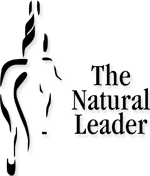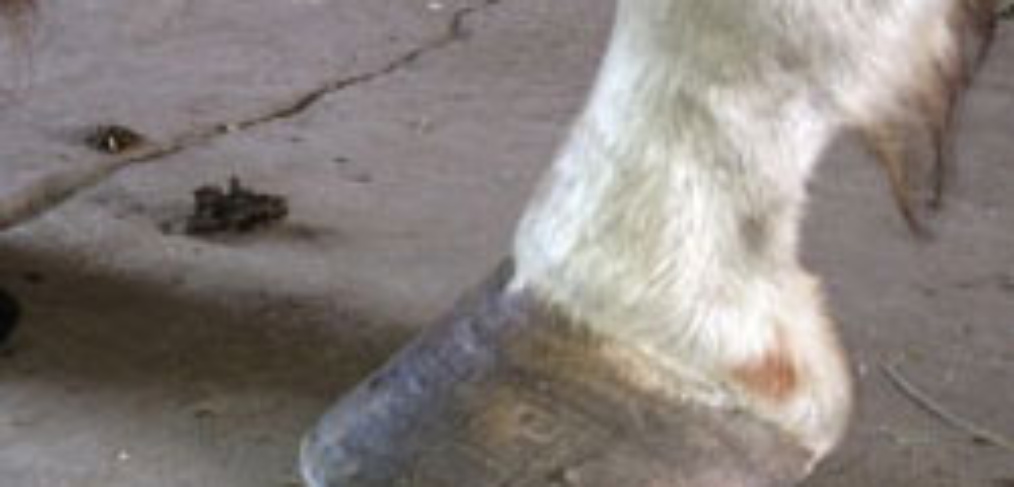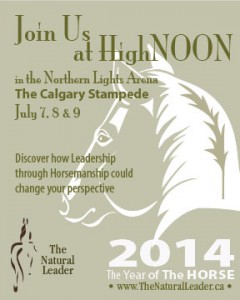“Two philosophies of leadership have been growing up in parallel. On the one hand is the philosophy that espouses the natural, the gentle, the judicious, the humane. On the other, the rough and severe. Both philosophies of training produced well trained organizations, but only one also produced well-trained leaders.”
Paul Belasik, Exploring Dressage Technique
BNN Workopolis: Thrive at Work >> Horses & Leadership with Bruce Sellery
I had to trust her, I was reaching to pick up a back foot. It had taken the better part of a year to get to this point and if actions reflect thoughts, trust had to be visible in everything I did. I had to trust me.
Pheobe joined the herd when a divorce required the assets be divided. Her trip to the meat pen was intercepted by a friend who put out a call for anyone willing to take on mares in foal. My offer to take a couple was clearly emotional as the logic of taking on four more horses typically requires planning.

 float like a butterfly
float like a butterfly
sting like a bee
If those two lines don’t bring up a great visual, Muhammad Ali will likely come to mind.
Carol Dweck’s book Mindset, The New Psychology of Success, and her TEDTalk introduced me to the two less familiar lines of the poem.
your hands can’t hit
what your eyes can’t see
Ali was on to something, he excelled in his ability to see and respond in split-second timing, but he was not the typical candidate for a great fighter. Ali was too small, his arms were too short, his bad boxing form was wrong, and yet he was able to knock out many an opponent. Ali was an outlier in the ring, he was able to outthink his opponent.
In Mindset, Dweck explores how what we believe can pre-determine the outcome. “The view you adopt for yourself profoundly affects the way you lead your life.” It’s not either/or – the nature, nurture, genes, or environment debate, but rather how what we believe, influences the choices we make. Ali believed he was a great fighter.
Seeing and responding in the moment is a skill that requires awareness and practice.
That is what working with horses has taught me. As soon as I begin to assume an outcome with a horse, they will surely outfox me. Each colt I start is similar, and oh so different, it is up to me to find where I need to assist and where I have to get out of the way. Easier said than done, as like a boxer, sometimes it is split-second timing that determines whether you stay in the saddle or hit the dirt.
In working with a horse we need to be as effective as a fly without being as annoying as one. It never ceases to amaze me how often people begin their participation in The Natural Leader programs with the statement, “I won’t be able to get the horse to do anything”. According to Dweck, this is a fixed mindset, and quite often they do prove themselves to be correct. They either don’t try or work too hard to make the horse comply. With a little coaching some can turn the liability of a fixed mindset, into one of growth.
What I love about “being effective as a fly” is that it suggests that it isn’t about strength, or trying harder, but it truly is about exploring what it will take to connect with the horse in a way that the horse understands your intention. It is about taking the time it will take.
Fortunately, workplace conversations don’t often require split-second decisions that boxing or horses might. Starting a conversation from a growth mindset is what coaching is all about. Listening and observing to what is happening and being said allows us to ask questions that truly can determine the outcome of the conversation.
Our ability to see is only limited by how we decide to look. The image of one participant comes to mind, he was having so much fun with the tasks we had given him, he backed Seth over the bridge.
The task was to get the horses to go forward over it. With no previous horse experience, this gentleman had approached the problem as something that could be explored. He had Seth step up a full 10” backwards on a 3 foot wide bridge. For those of you who know horses that is no small feat!
Employing the growth mindset and embracing the idea of being effective as a fly Seth and his partner floated around the arena, asking Seth to do what I hadn’t even imagined. I have lost touch with that individual, but he continues to impact others as I share his story in an effort to inspire others to find a growth mindset.
Therapy is not something that I do with The Natural Leader programs, so when I encounter someone who has been traumatized with horses I do not have the degree to back me up. I can only go with what I see. Leadership is about demonstrated behaviour and a conversation I am quite comfortable with, so behaviour is where my focus lies.
Fear can be a great motivator, a tool for learning or it can paralyze us. What I hope for those who are fearful is that they can recognize how fear, or the story, that is holding them back from achieving more in their career or life.
Too afraid to even enter the arena, a participant of a recent program had been watching her peers go through a series of activities with the horses. Before heading up for lunch, I asked if she would be willing to connect with a horse together. I was searching for the invitation she would be comfortable with. Even with that offer, she was hesitant, in fact she flat out refused.
She had shared her story of trauma by horses with the Wranglers and was keen to let me in on the details. I expect she had also told everyone else on her team. Repeating the story not only re-traumatized her, but words of acknowledgement from others appeared to reconfirm her fear.
You can’t tell someone “Don’t be afraid”, so I was looking for the question that would help her step out of her comfort zone. What she had seen – the demonstrated behaviours or facts, rather than what she had believed to be true – the story. When she admitted she had seen nothing that confirmed her fear, she offered that coming into the arena with “one” horse might be okay.
In The Natural Leader programs “Everything is an invitation. An Invitation can be accepted, modified or declined.” I was thrilled she was willing to take that step. I had picked Big Jim. Though large in stature Big Jim is the image of calm and quiet. Still concerned, the introduction was short but she acknowledged she could be beside a horse. She left the arena one big step closer to change.
That afternoon, she volunteered to be the observer. Perhaps it was sharing those observations with her team that helped her believe she was ready to participate. Her smile and the change in her body language that followed suggested the relief that came with the belief she could do this, as her confidence grew so too did her participation.
She needed others to see and believe what she had believed impossible. Leaders are given that responsibility all the time, opening the door to allow someone to step through and experience the change they are seeking.
Western Horse Review >> Good Work If You Can Get It, Ingrid Schultz Sept/Oct 2014
 Do people really understand what you are saying? The question came to mind while watching a recent Buck Brannaman clinic.
Do people really understand what you are saying? The question came to mind while watching a recent Buck Brannaman clinic.
Since the release of the movie BUCK, people have flocked to his clinics. Perhaps drawn by fame, the romantic image of the cowboy or simply because he is a fabulous horseman. An entertainer as well Buck speaks in metaphor and through stories of his own experience. The classes are large so he suggests “if you behave like an alcoholic you will always think I am talking about you”. Hoping the magic will rub off, people and horses “waller” around the arena for three to four days, often never to return.
For a number of years I have made the drive to Montana to ride with Buck. This year friend, and co-facilitator in The Natural Leader programs, Kristen Cumming came along. Enjoying a cold beer after a long hot day in the arena, a brilliant idea surfaced. Buck needs an interpreter! We laughed at the thought of Kristen, in plain language, doing voice over to what Buck was saying. While it was in good fun, I have to admit the idea has merit.
It was most apparent when he demonstrated a pretty basic maneuver, “With your rein ask your horse to step over with his front feet”, the instruction continues, “open the door for your horse to move through”. Watching people can be painful as their frustration becomes evident as they try harder to do what they don’t understand.
The conversation around “open the door” and the actual meaning of “shift your weight out of the way of the horse’s leg” had me wondering how many people truly understand what their leaders are saying.
All organizations create their own language to set annual goals and objectives, define the quarterly expectations or even the task for the day. Done to aid in the effectiveness and efficiency of communication, just as metaphors do, acronyms replace department names, strategic plans, and programs, meetings are often conducted as if everyone understands the expressions and language. As a leadership consultant, I often find myself asking for the definition so as not to be left behind.
Communication is a common topic in The Natural Leader programs. As people work through an activity with a horse what quickly becomes clear is how much we assume we are communicating when in reality we are possibly only delivering half the message.
Effective communication shows up through the clarity of our intention, actions, emotions and the words we choose, the impact on others shows up in their actions or lack of them. Consider when you have committed to an objective, or idea, and you don’t experience the enthusiasm you were expecting from your team. How do you interpret that? If they had an interpreter, what might they say to you?
People who don’t understand, don’t stay. It is not a reflection of the competency of the leader or their ability, it is simply a communication break down.
All the elements of the activity Buck demonstrated are there. His subtle actions are enough for the horse, but rarely enough for his larger audience, you have to be dedicated and observant. Without seeing the weight shift the metaphor of opening the door has no meaning. A few more specific and concise words would go a long way to more riders understanding how he achieves his results.
If you had an interpreter what words would they choose to complete your thought?
——-
Nancy Lowery, lives and works in Calgary Alberta Canada. Her business The Natural Leader offers powerful leadership training through interactions with horses.
“How can I trust your yes, if you can’t say No?”





